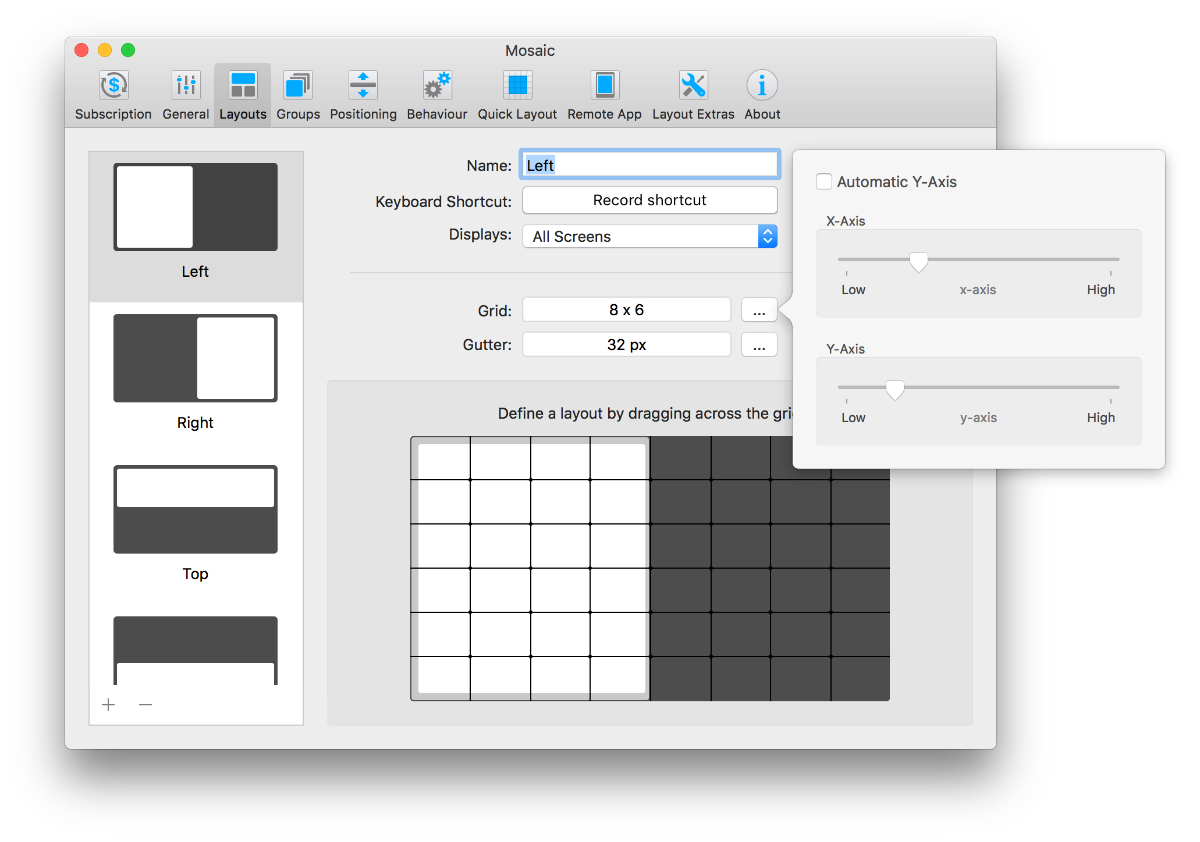Mosaic 1 0 3 – Professional Level Window Management
In the following guide, we provide step-by-step instructions on setting up and running MOSAIC on Windows. To simplify the isntallation, we use Anaconda_ to install some required dependencies.
- Mosaic 1 0 3 – Professional Level Window Management System
- Mosaic 1 0 3 – Professional Level Window Management System
Mosaic 1.0.3 – Professional-level window management. February 9, 2017 Mosaic is a powerful window manager that allows easy repositioning and resizing of macOS apps, transforming multi-window chaos into a productive suite of tools. Professional Window Management Resize and Reposition Mac Windows Easily $ 30. V1.0.7 for Mac Download Trial. Platforms: Mac OS 10.11 (El Capitan) or higher. Screenshots Website Virus Scan Video Languages. Bigger computer screens are nicer, but they also run the risk of letting your windows get way out of hand.
1. Installing Anaconda
First we will install Anaconda_ to easily install the dependencies required by MOSAIC. Download the 64-bit Anaconda_ installer for Python 2.7 and use the graphical installer.
Warning
MOSAIC is not yet compatible with Python_ 3. Please ensure that you install Anaconda_ for Python_ 2.7
2. Installing MOSAIC dependencies within Anaconda
MOSAIC is written in Python_ 2.7 and utilizes a number of different packages and utilities. In the following we’ll install a number of these (specifically, python, gcc, gfortran, qt, and pyQt4). With Anaconda_ this is easy to do.
First, we create a self-contained environment to host the MOSAIC installation. Open the Anaconda_ prompt (Start Menu–>Anaconda 2–>Anaconda Prompt) and type:
Activate the new environment:
Add a new installation source (conda-forge) for packages that are not included with Anaconda_ out of the box:
Install all the dependencies by typing:

Hint
The latest dependency version numbers can be obtained from the requirements.txt file.
Install the MOSAIC source by cloning the Github repository or using one of the methods below.
3. Installing MOSAIC
Install using Setuptools
The command-line version of MOSAIC can be installed using pip as shown below. Any additional dependencies required by MOSAIC will be installed automatically.
Mosaic 1 0 3 – Professional Level Window Management System
Note
Installing the graphical interface requires one to install MOSAIC from the source distribution as outlined below.
Install from a Downloaded Source Distribution
First we need to obtain the MOSAIC source code. For analyzing publication data, we recommend downloading the latest stable version of the source code (`download source`_). Alternatively, the latest development version can be downloaded from the `MOSAIC page on Github`_. Here we will show you how to set up MOSAIC from the latest stable release:
Mosaic 1 0 3 – Professional Level Window Management System
Download the latest release (`download source`_)
Create a directory for the project source. In this case we will create a directory called MOSAIC, located in
~/projects/, where ‘~’ is your home directory.
Navigate to the directory:
Extract the source into this folder.
Make sure you are working in the virtual environment we set up in the previous step by typing:
Note
You will notice that (MOSAIC) now appears in front of the $ prompt in your shell. This inidicates that the virtual environment is active. We have employed this notation to indicate commands that should be run from inside the virtual environment.
MOSAIC and its dependencies are built using setuptools. Navigate to ~/projects/MOSAIC/ and run the following:
Finally, add the installation directory (~/projects/MOSAIC as set up previously) to your PYTHONPATH as shown below. This addition can be made permanent by adding the line below to your .bash_profile (OS X) or .bashrc (Ubuntu) script.
4. Testing MOSAIC
To test the MOSAIC installation, in the MOSAIC directory type
Verify that all tests pass as seen below
To use it, just add the images you want to include in the composition with the 'add photo' option, plus the photo that will serve as the base of the mosaic with the 'compose' button.
Once you've chosen the second option, you can decide the final size of the mosaic, then let the application do the rest.
In just a few minutes, your mosaic will be ready. You can use it in other projects or even print it out.
Mosaic supports JPG and BMP images and exports compositions as BMPs.